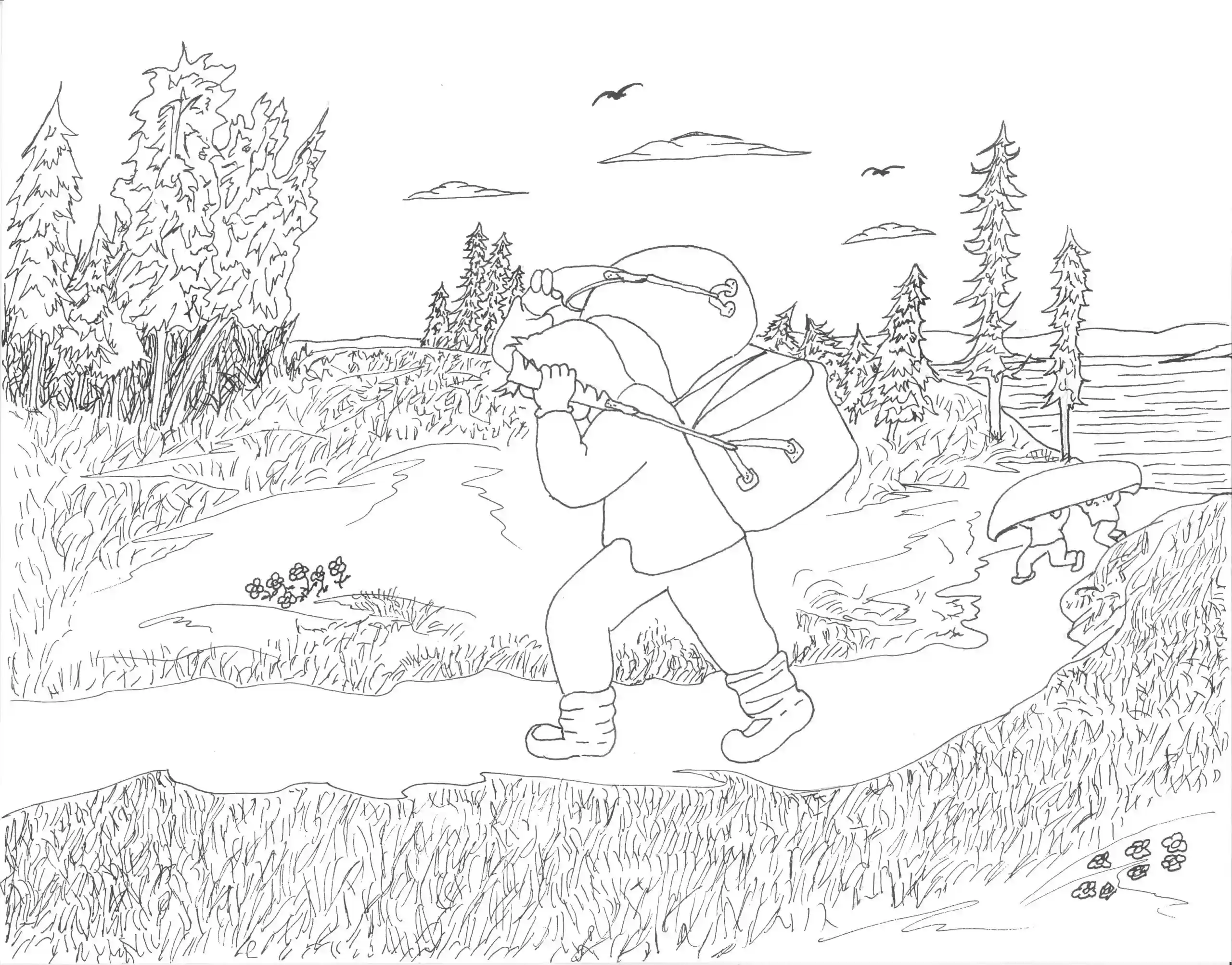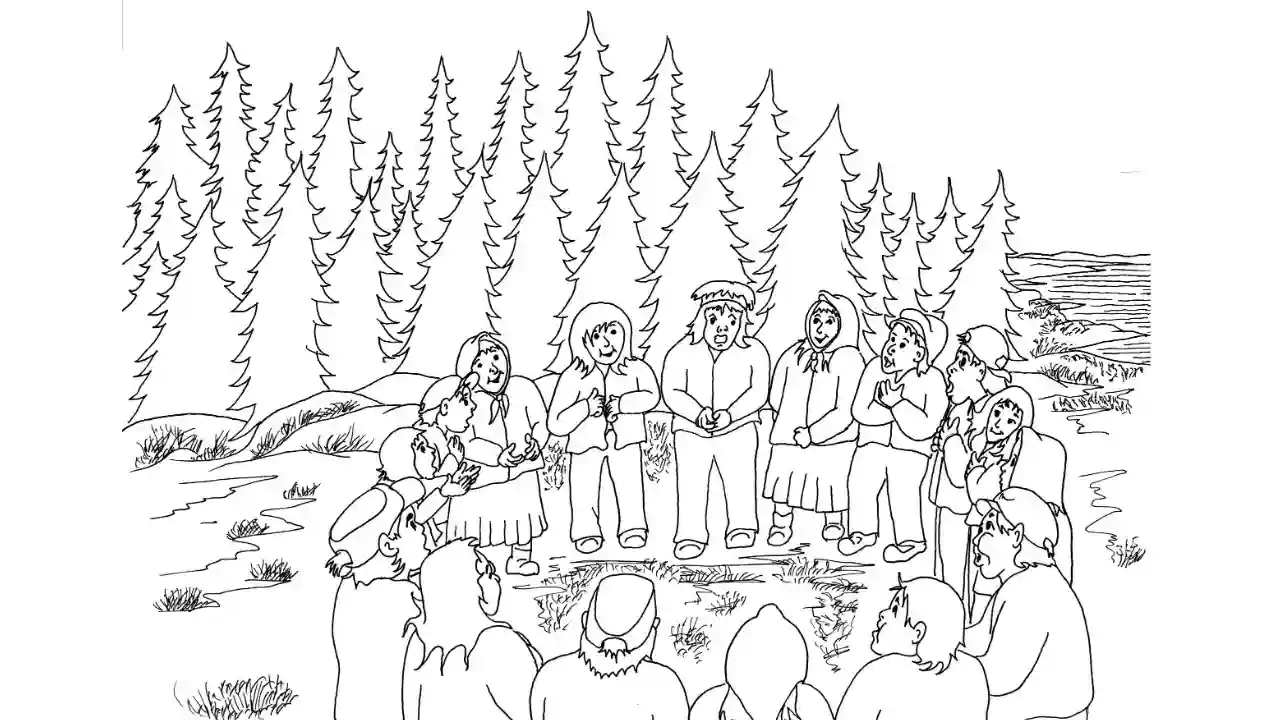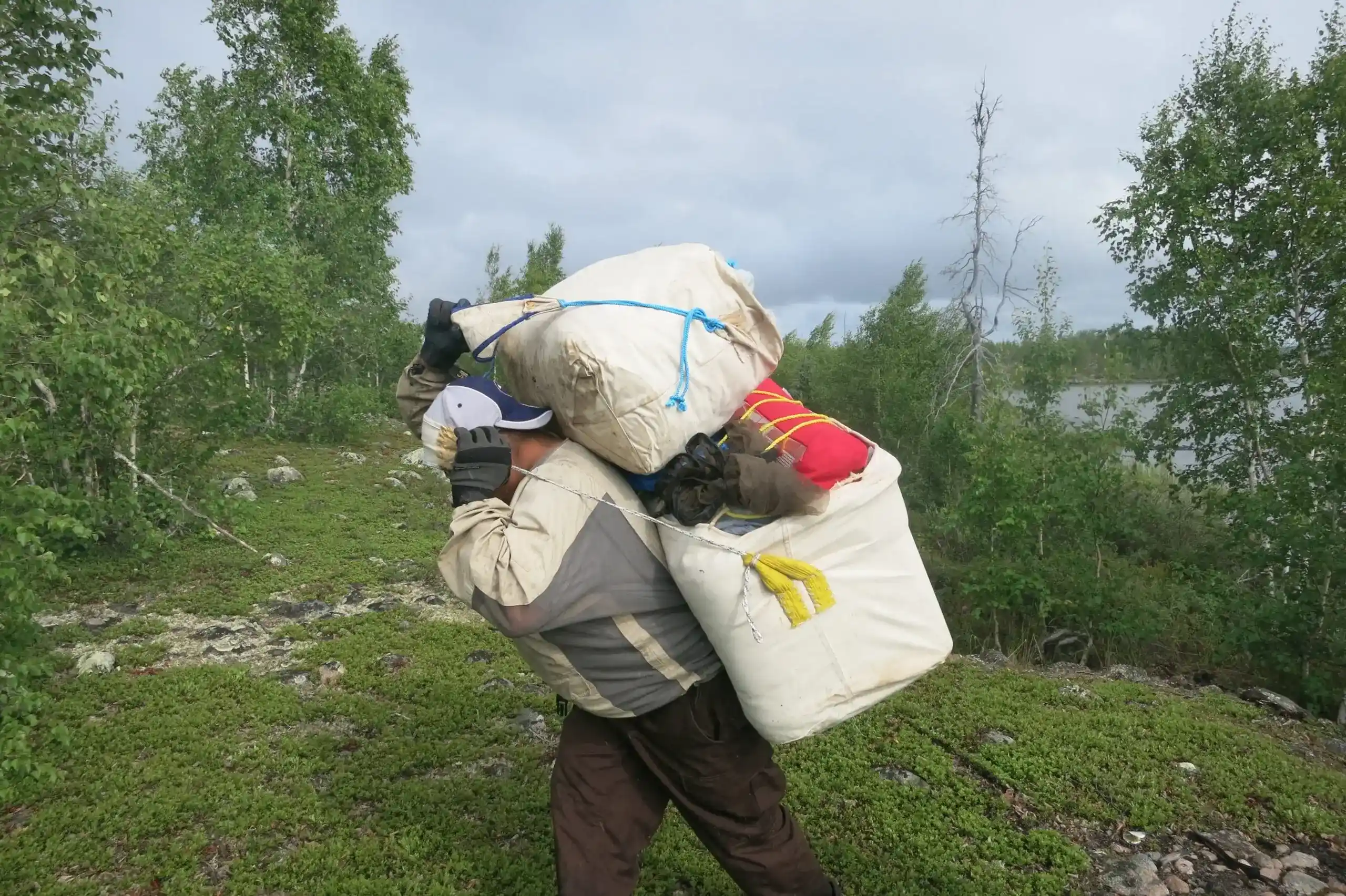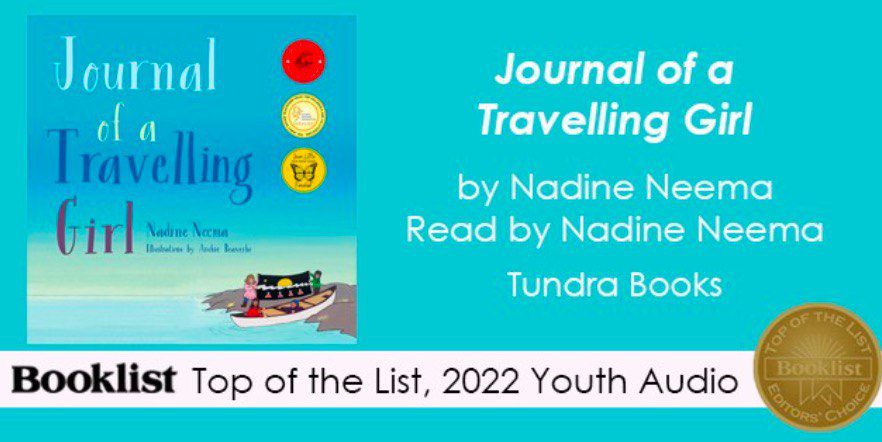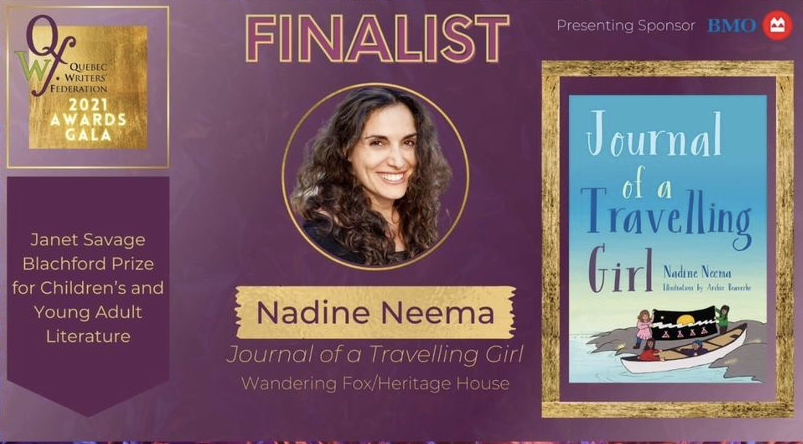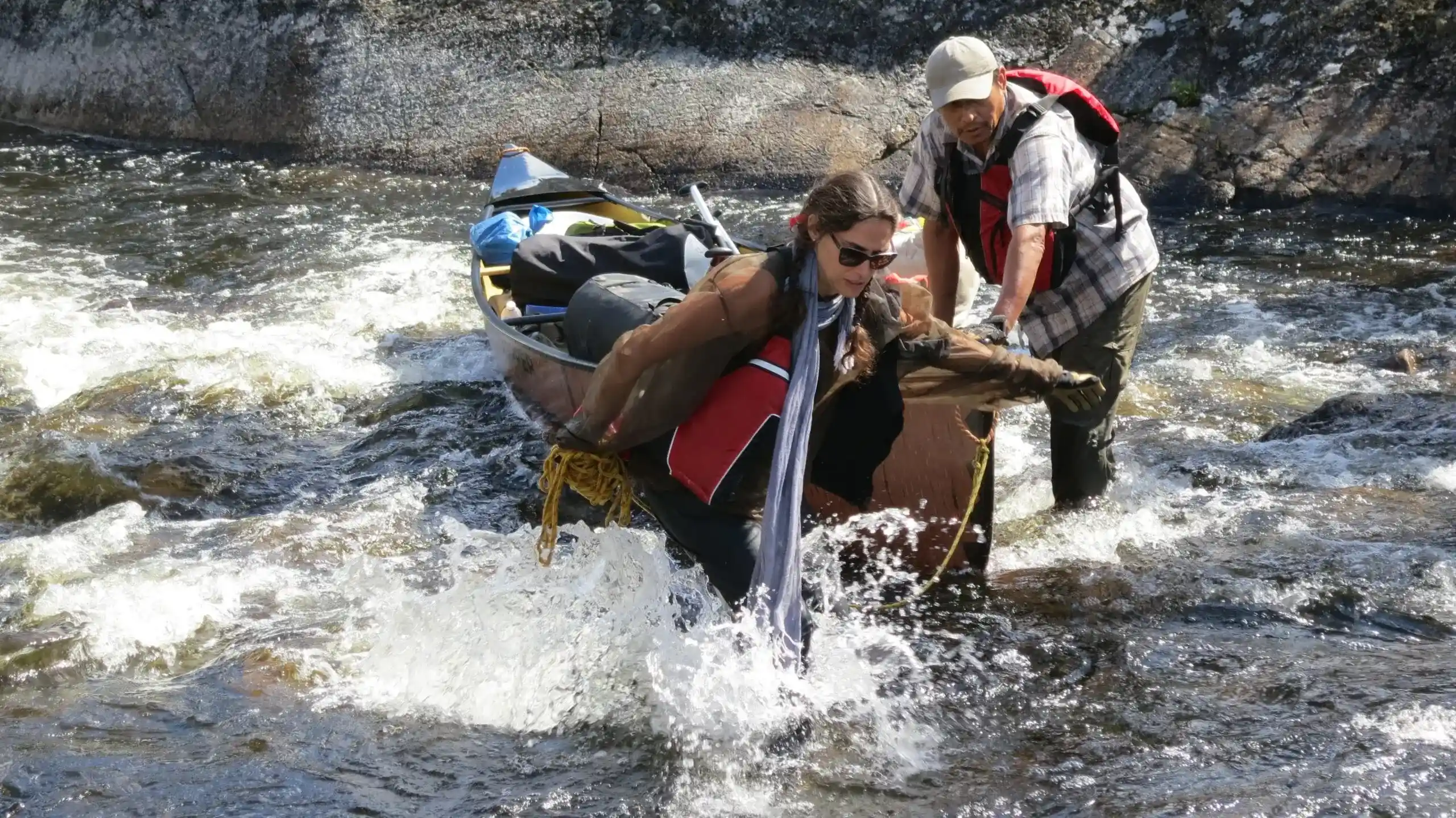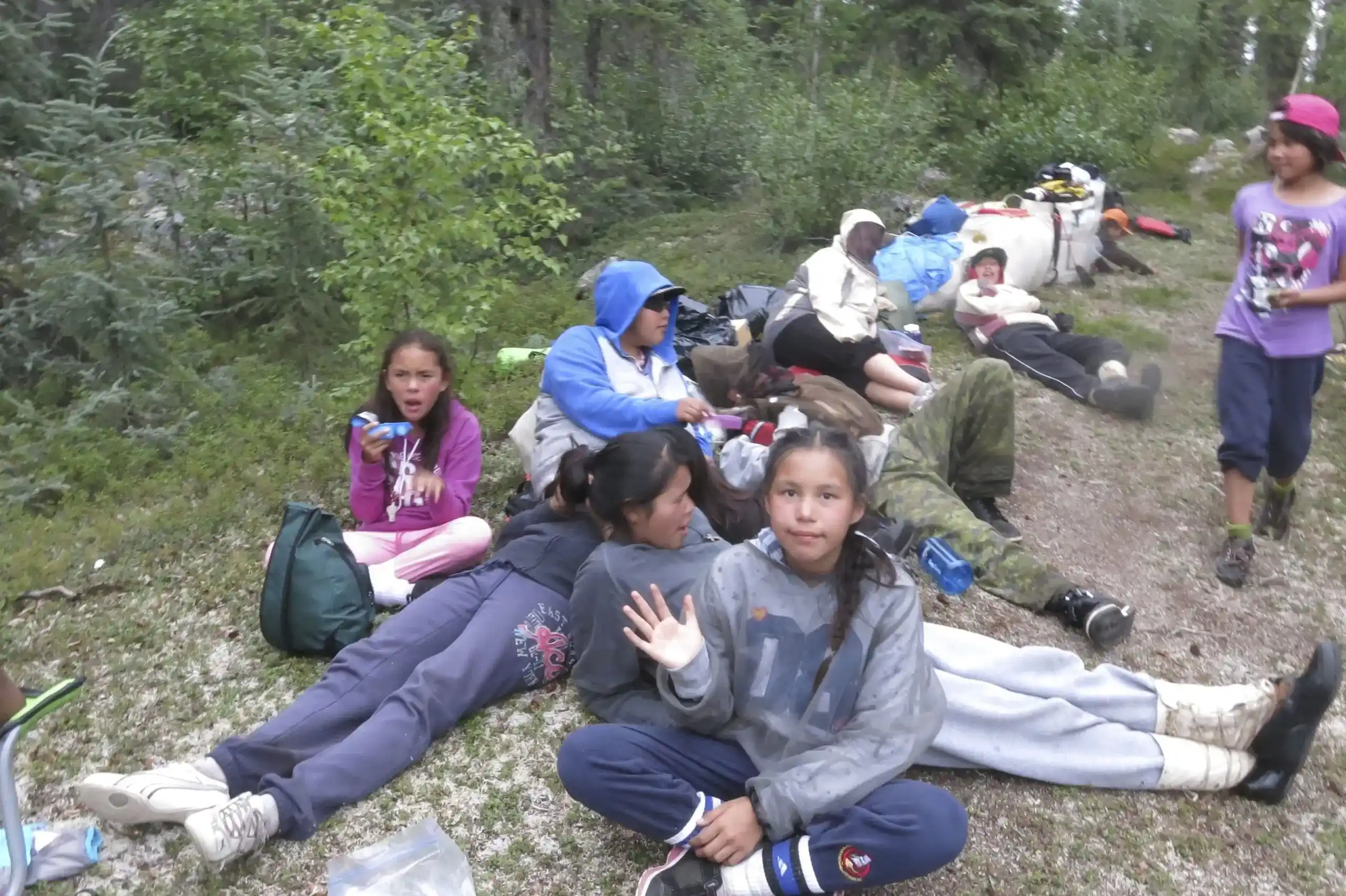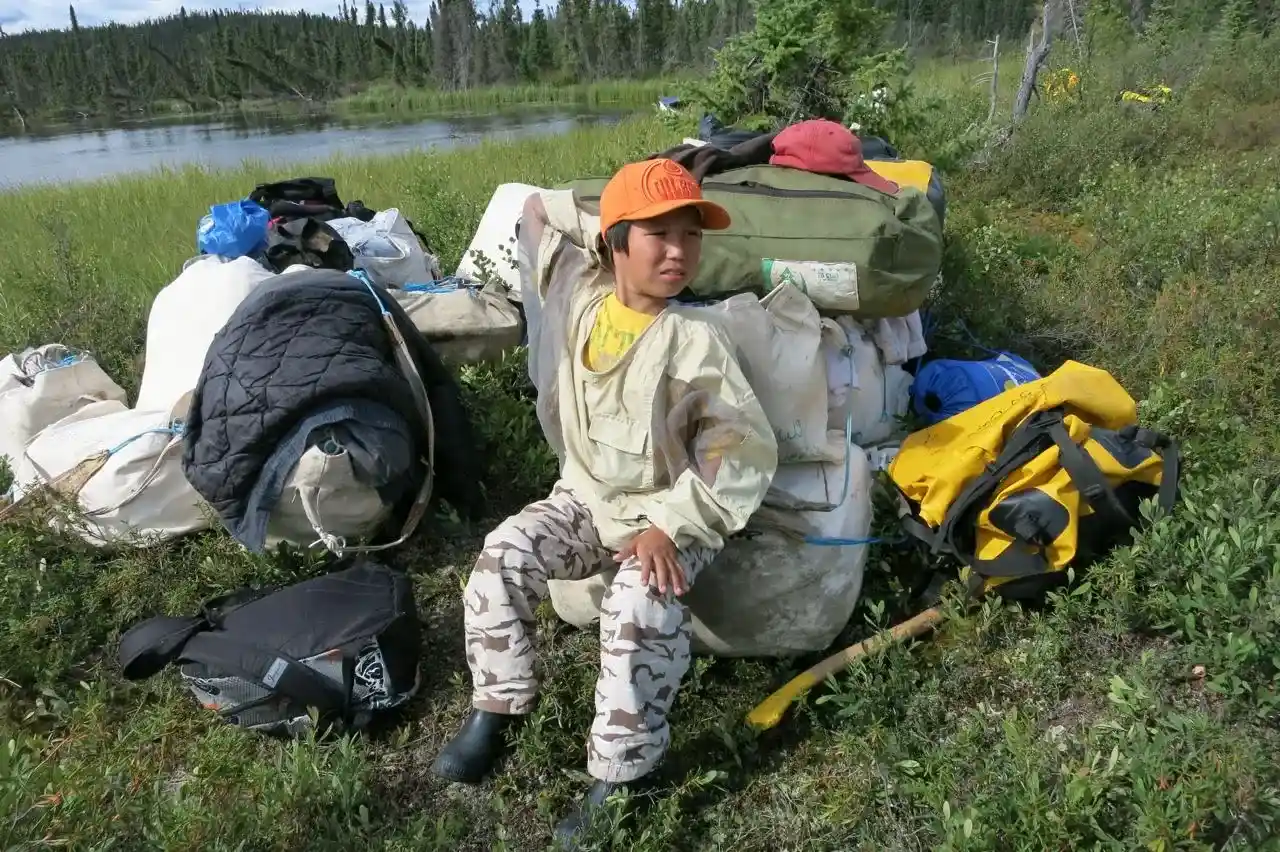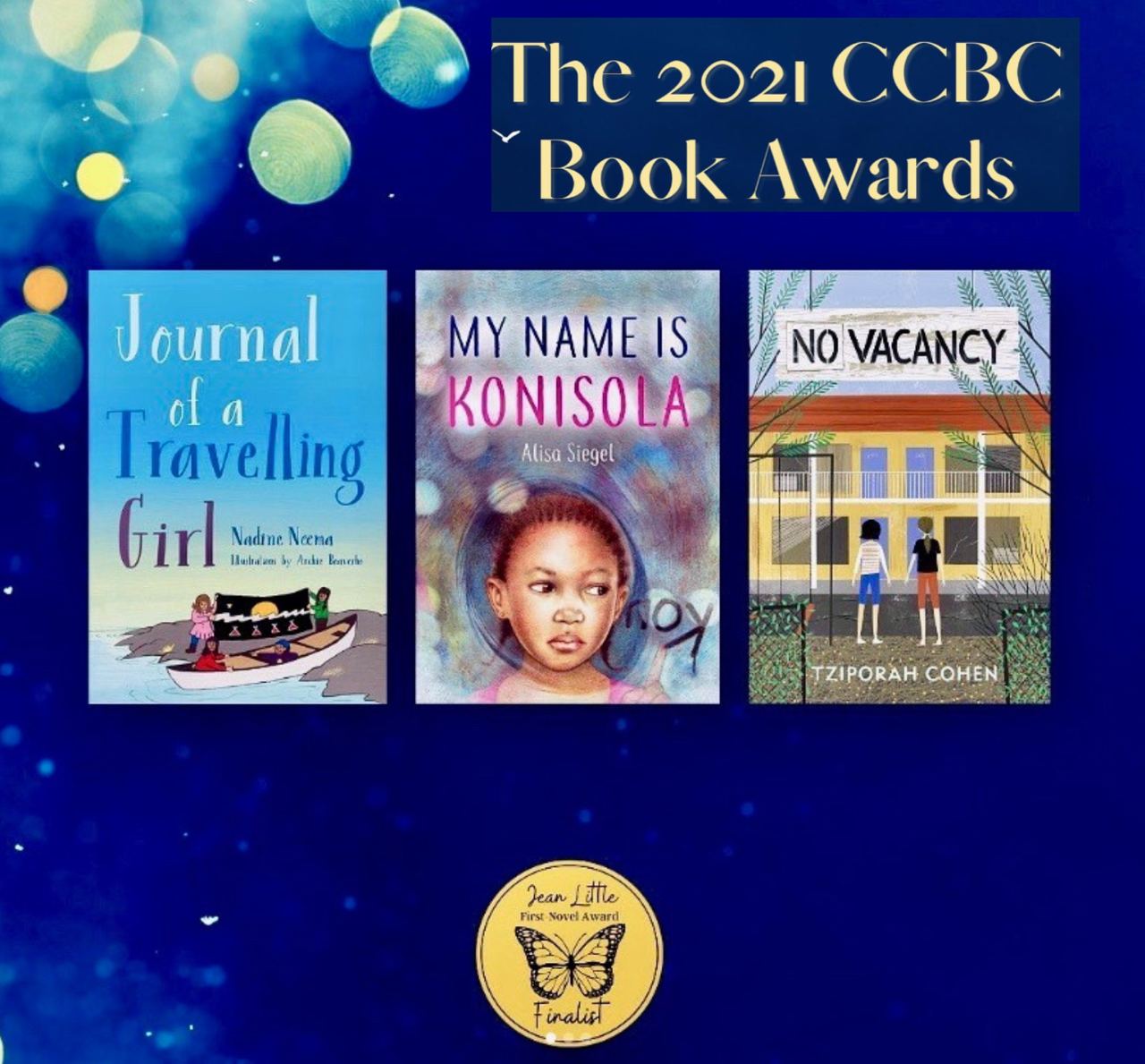
About The Book
Journal of a Travelling Girl is a historical fiction novel for 9-12 year olds. It’s a coming of age story of a young girl who goes on the annual Tłįchǫ canoe trip retracing the trails of their ancestors on their way to the 2005 celebrations for the effective date of the Tłįchǫ Agreement. The book follows three best friends and their adventures on the journey. The teachings mainly come from one of the girl’s grandparents through stories they share around the fire about their traditional way of life, Treaty 11 and the subsequent self-government agreement. The old-time stories were shared with Neema by elders of Wekweètì between 1999 and 2002. Themes of the book include friendship, community, grief/loss, healing, personal growth and connection to the natural world.
Journal of a Travelling Girl was published in October 2020 by Wandering Fox / Heritage House in Canada and Orca Books in the USA and went to second print in March 2021. The audiobook was released in September 2022 by Penguin Random House Canada. The book was shortlisted for three awards – two Canadian Children’s Book Centre awards, namely the Geoffrey Bilson Award for Historical Fiction, and the Jean Little First-Novel Award, and the Quebec Writer’s Federation Janet Savage Blachford Prize for Children’s and Young Literature. It was also longlisted for the First Nation Communities Read Award. The audiobook was Booklist’s Top of the List Editor’s Choice for 2022 youth audio. The audiobook contains sounds recorded by Neema while living in Wekweètì and music by the Chief Jimmy Bruneau School Drummers.
About Author

Nadine Neema
Born in Montreal of Lebanese descent, Nadine Neema is an award-winning multi-disciplinary artist. She has four albums of songs and spoken word poetry. She has toured internationally opening for artists such as Joe Cocker & Elton John, and was mentored by Leonard Cohen, who co-produced her 2nd album. Neema began working in Wekweètì, NWT in 1999, first as a community manager, then assisting with land claims negotiations under Chief Negotiator John B. Zoe. She has maintained a strong bond with the community through workshops, photography projects, and canoe trips. Neema leads creativity, songwriting and storytelling workshops to empower youth to find their own voice.
For more about Neema click here.
About the illustrator
Archie Beaverho
Archie Beaverho is an accomplished painter, illustrator, and cartoonist whose understanding of his Tłįcho Dene culture is reflected in his work. He creates paintings of spiritual activities of his people, like drum dancing, hand games, and hunting He lives in Behchokò, Northwest Territories.

Videos
Testimonials
Teacher’s Guide
Warm up - Look at Tłįchǫ Lands on the map. Prompt students to share what they know about life / communities in the North. How many have participated in outdoor activities like canoeing, portaging etc
The Sounds Of The Dogrib/Tłįchǫ Language https://www.youtube.com/watch?v=tu3Nzl2ieEw.
Also listen to the audio pronunciation of Tłįchǫ words tab.
Oh Wekweètì – a song the author wrote with Tłįchǫ students and video of their community
https://www.youtube.com/watch?v=svP8x3hx9Xo
Questions for the students:
The cover:
- Before you start reading, look at the cover. What information can you find?
- Can you find a second title inside the book? What is it?
- Name the chief of the Wekweètì community while the author was working there.
- What do you think this book will be about?
Days 1 and 2
- What is the name and nickname of the little girl writing the story?
- What is the name of the community where she lives? What is the name of the closest city?
- Who was Uncle Joe and what happened to him?
- How old is the main character and who are her two best friends?
- Where are they heading during their canoe trip and why are they going?
- Compare and contrast your life now with Wekweètì's.
- What do you do when you are feeling very sad? Can you relate to how Jules is feeling?
- Communities and cultures around the world have words that are special to them. Can you think of some you and your friends use? (E.g., "like", "awesome", "dope")
- Can you think of examples in this story? (“ever”)
- Why do the girls take the branch from the prophet's tree? What is the importance of this tree?
- How do you think you'd feel going off on such an adventure without your parents?
Discuss loss, sadness, and mourning. Watch video https://youtu.be/5MQcF52OUH4 to help students visualize the landscape and people. Hand out Venn Diagram template for students to write differences/similarities between Tłįchǫ life and their life.
Days 3 and 4: Intro to Treaty 11
- Draw five characters from the book.
- Why was Jules anxious to start portaging?
- How did grandma and Jules make a carpet to sit on in the tepee?
- Who was Chef Bruneau and what was his vision?
- What do you think of his vision and why?
- Is a Treaty a good thing?
- What do you think Chief Monfwi meant when he said, “As long as the sun rises, the river flows and the land does not move, we will not be restricted from our way of life”?
- Why is Jules afraid of the big animal coming into her tent? What is the big animal? Would you be afraid?
- Today, the Tłįchǫ win money if they win the hand games. In the old days, what did they win?
Video of hand games : https://youtu.be/AGLjBqLOPcE
Days 5 and 6:
- What was the abandoned cabin the children found?
- Why was Grandpa so angry with Jules? Do you think he was right? Explain.
- Name three differences between how things were done in the old days and now in modern life.
- Why is it important to know how things were done in the past? What do Jules and her friends learn about the old days?
- What did Chef Bruneau mean about being strong like two people?
- Ask your parents about a big change between their childhood life and yours. What do you think?
Days 7 and 8:
Preparation for a discussion about Treaty 11 and its replacement by the Tłįchǫ Agreement 2005. Here is some intro to Treaty reading: https://www.canadashistory.ca/education/kayak-in-the-classroom/treaties/treaties-educational-package and https://www.canadashistory.ca/education/classroom-resources/making-treaties
- What did Jules learn from her dream?
- What should you do when you see a bear? What did they do in the story?
- How did Jules change or progress during her journey?
The Tłįchǫ Agreement is meant to honour and update Treaty 11, the last numbered treaty signed with Canada's First Nations in 1921. Based on what you've read:
- Why is this Agreement so important to Canada?
- What is a treaty?
- What is a land claim agreement?
- What is self-government?
Days 9 and 10:
- Why was Grandma scared the first time she heard a snowmobile?
- Why is the last island before heading to Behchoko so important in the history of the Tłįchǫ?
- What are some of the emotions people are feeling during their arrival?
- Why is this moment so important?
- What is the meaning of the word “Mahsi”?
- Who accompanied Jules spiritually on her journey - both by canoe and on her inner journey? Name five.
- Did the branch help Jules? Explain your answer.
- What do you think of the book so far? What do you think of the story, the characters, the writing style, etc.?
Days 11 and 14:
Drum dance https://www.youtube.com/watch?v=K_V_59dlRUw
Tea dance https://www.facebook.com/watch/?v=397647317463421
- What is the meaning of the images in the Tłįchǫ government flag?
- Why did Jules’ journal skip from Day 11 to Day 14? What was she doing?
- What did the Tłįchǫ People put in the fire and why?
- How did Jules choose to feed the fire?
- What did this adventure inspire Jules to become?
- At the end of the journey, how is the protagonist feeling about her canoe trip and the Tłįchǫ Nation?
- Do you think there should be a sequel to this story? What ideas would you have?
Wrap Up Options
- How does Jules change or grow during her trip? Name 3 events or moments from the journal that show a moment of growth or understanding.
- Can you relate to this? Describe a moment from your life where you have changed or grown a lot.
- What have you learned about the relationship between the Tłįchǫ and Canadian government? How do *you* fit in?
Tłı̨chǫ – Dogrib (descendants of the Dene, an Athabaskan Indigenous People of the Northwest Territories.
Wekweètì – the smallest of the four Tłı̨chǫ communities. The place where Julia lives and from where the canoe trip begins.
Gamètì – the second smallest of the four Tłı̨chǫ communities
Whatì – the second biggest of the 4 Tłı̨chǫ communities
Behchokǫ̀ – biggest of the 4 Tłı̨chǫ communities – the place where they are paddling to for the effective date of the Tłı̨chǫ Agreement
mahsì – thank you
mahsì cho – thank you very much
dagawo – drum dance
orì – spruce
sèotı̨ - family
Page 1-3
See Video section above
Page 11-14
https://youtu.be/TNrGN5hd868
Page 85 to the end
https://youtu.be/2PC6gS9n-qU
Award winning short film by Nadine Neema coming soon
For More Info





